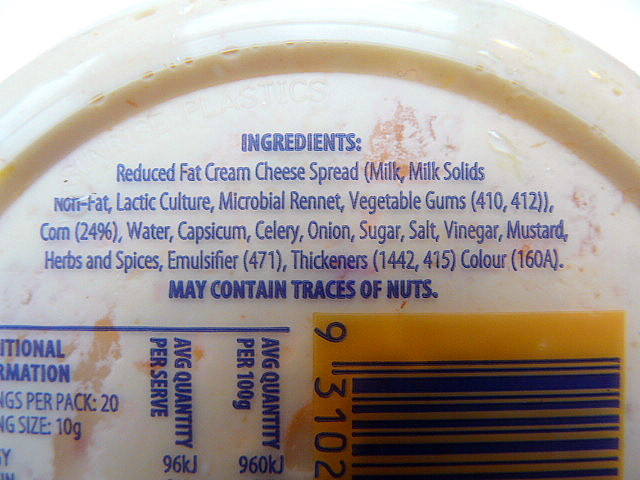Emulsifier In Food: A Step-by-Step Overview for Chefs
Everything about the Function of an Emulsifier in Food and Its Significance in Modern Food
Emulsifiers are critical in modern food, assisting in the mix of immiscible liquids like oil and water. Their ability to support mixes boosts the texture and taste of different food. From salad dressings to baked goods, emulsifiers play a considerable function in both industrial and home food preparation. The science behind their function and the future advancements in their use continue to be much less explored. What more could be discovered regarding these vital culinary agents?
Recognizing Emulsification: The Science Behind the Process
Although emulsification might look like a simple culinary strategy, it entails complicated scientific concepts that are vital for producing steady mixtures of immiscible fluids, such as oil and water. At the heart of this process exists the principle of surface tension, which prevents both fluids from mixing normally. Emulsifiers, substances that decrease surface stress, play an essential role in assisting in the combination of these liquids. They possess both hydrophilic (water-attracting) and hydrophobic (water-repelling) residential or commercial properties, allowing them to secure themselves at the interface between oil and water.
When an emulsifier is introduced and the mix is flustered, it develops a safety obstacle around distributed beads of one fluid within the other, stabilizing the blend. This activity not just boosts structure and mouthfeel in food however additionally adds to their visual charm. Emulsifier In Food. Comprehending the science behind emulsification is basic in modern food, permitting chefs to produce a selection of sauces, dressings, and emulsified recipes
Common Types of Emulsifiers Made Use Of in Food
Emulsifiers are important components in the food sector, playing a crucial function in maintaining mixtures of oil and water. Different kinds of emulsifiers are typically used, each with special residential or commercial properties fit for different applications. Lecithin, stemmed from soybeans or egg yolks, is among the most prominent all-natural emulsifiers, typically located in dressings and chocolates. Mono- and diglycerides, which are originated from glycerol and fats, are extensively used in baked goods and margarine to enhance appearance and expand service life. An additional usual emulsifier is polysorbate 80, preferred for its capability to improve the uniformity of ice creams and sauces. Additionally, xanthan gum tissue and guar periodontal work as thickening agents that also add to emulsification in gluten-free products. These emulsifiers are essential to developing a steady, palatable product in modern-day food formulas, making certain a pleasurable sensory experience for consumers.
The Function of Emulsifiers in Numerous Food Products
A range of food products rely upon emulsifiers to accomplish wanted appearances and stability. These compounds promote the mixing of immiscible liquids, such as oil and water, which is essential in lots of refined foods. In salad dressings, emulsifiers assist preserve a consistent combination, protecting against splitting up and enhancing shelf life. In baked products, they add to a consistent crumb framework and dampness retention, improving overall high quality.
Emulsifiers likewise play a considerable duty in dairy products, such as gelato and yogurt, where they support fat blobs, ensuring a smooth mouthfeel. Additionally, in condiments and sauces, they improve thickness and enhance spreadability. This performance is vital in the production of chocolates, margarine, and mayonnaise, where a cohesive product is required. Generally, the usage of emulsifiers in numerous food products is important to contemporary food manufacturing, improving stability and consistency across a variety of items.
Just How Emulsifiers Enhance Appearance and Taste

When integrated into food items, emulsifiers substantially enhance both texture and taste, producing a more satisfying consuming experience. These compounds facilitate the mixing of active ingredients that commonly do not blend well, such as oil and water, causing a smoother, creamier uniformity. This not only boosts mouthfeel however additionally enables tastes to distribute uniformly throughout the product, amplifying the total taste.

Emulsifiers in Home Cooking: Tips and Techniques
Exactly how can home chefs properly make use of emulsifiers to boost their dishes? Emulsifiers play a necessary duty in attaining preferable textures and tastes in homemade recipes. Using egg yolks in mayonnaise or hollandaise sauce enables for a stable solution, incorporating oil and water effectively. Home chefs can additionally trying out mustard, which serves as an emulsifier in vinaigrettes, ensuring a smooth uniformity.
In cooking, incorporating lecithin, found in egg yolks or soy, can enhance dough security and wetness retention. Furthermore, using industrial emulsifiers like xanthan periodontal or guar gum can aid enlarge sauces and dressings while maintaining a velvety mouthfeel.
When producing ice lotions or whipped garnishes, emulsifiers can prevent ice crystal development, leading to a smoother texture. By understanding these techniques, home chefs can considerably elevate their cooking creations, offering consistent and delightful dishes that display the power of emulsification.
The Future of Emulsifiers in Culinary Development
As the cooking world continues to advance, the function of emulsifiers is positioned to end up being progressively cutting-edge and diverse. Advancements in food scientific research are resulting in the growth of new emulsifying representatives acquired from all-natural sources, which provide to health-conscious consumers and improve the sensory top qualities of recipes. Technologies such as plant-based emulsifiers are acquiring grip, allowing cooks to develop vegan and allergen-free options without jeopardizing appearance or flavor.
Additionally, the usage of emulsifiers in molecular gastronomy is increasing, enabling chefs to our website trying out distinct structures and discussions that captivate restaurants. As sustainability becomes a concern, the future might see a change in the direction of environmentally friendly emulsifiers that minimize ecological influence.
Inevitably, emulsifiers will remain to play a crucial duty in cooking development, linking the void in between practice and modernity, and permitting cooks to push the boundaries of creativity in their cooking areas.
Frequently Asked Concerns

Are Emulsifiers Safe for Individuals With Allergies?
Emulsifiers can be safe for people with allergic reactions, depending upon their certain sensitivities. Certain emulsifiers, acquired from allergenic sources like soy or eggs, might set off responses, demanding careful ingredient analysis and examination with healthcare professionals.
How Do Emulsifiers Impact Food Service Life?
Emulsifiers boost food life span by supporting blends, preventing splitting up, and reducing microbial development. This stability aids preserve texture and more tips here taste in time, permitting products to continue to be attractive and safe for usage much longer than without emulsifiers.
Can Emulsifiers Be Derived From All-natural Sources?
Yes, emulsifiers can be obtained from all-natural sources such as plants, eggs, and milk products (Emulsifier In Food). These all-natural emulsifiers assist maintain mixtures, boosting texture and consistency in numerous food applications while being preferred for health-conscious customers
What Are the Ecological Impacts of Emulsifier Production?
The ecological impacts of emulsifier manufacturing consist of resource exhaustion, environment damage, and air pollution from synthetic processes. Natural emulsifier sourcing can minimize some impacts, however on the whole, industrial practices still posture significant environmental difficulties to ecosystems worldwide.

Exist Vegan Emulsifiers Available in the marketplace?
Yes, there are a number of vegan emulsifiers available in the market, such as lecithin derived from soy or sunflower, guar gum tissue, and xanthan gum tissue. These alternatives deal with plant-based diets without compromising emulsifying residential or commercial properties.
Emulsifiers are necessary active ingredients in the food sector, playing an important function in maintaining combinations of oil and water. A variety of food products depend blog on emulsifiers to achieve preferred appearances and stability. When incorporated right into food products, emulsifiers greatly improve both texture and taste, producing a more enjoyable consuming experience. Additionally, emulsifiers can maintain air pockets in whipped products like lotions and mousses, leading to a light and airy texture. Emulsifiers boost food rack life by supporting blends, avoiding separation, and lowering microbial development.